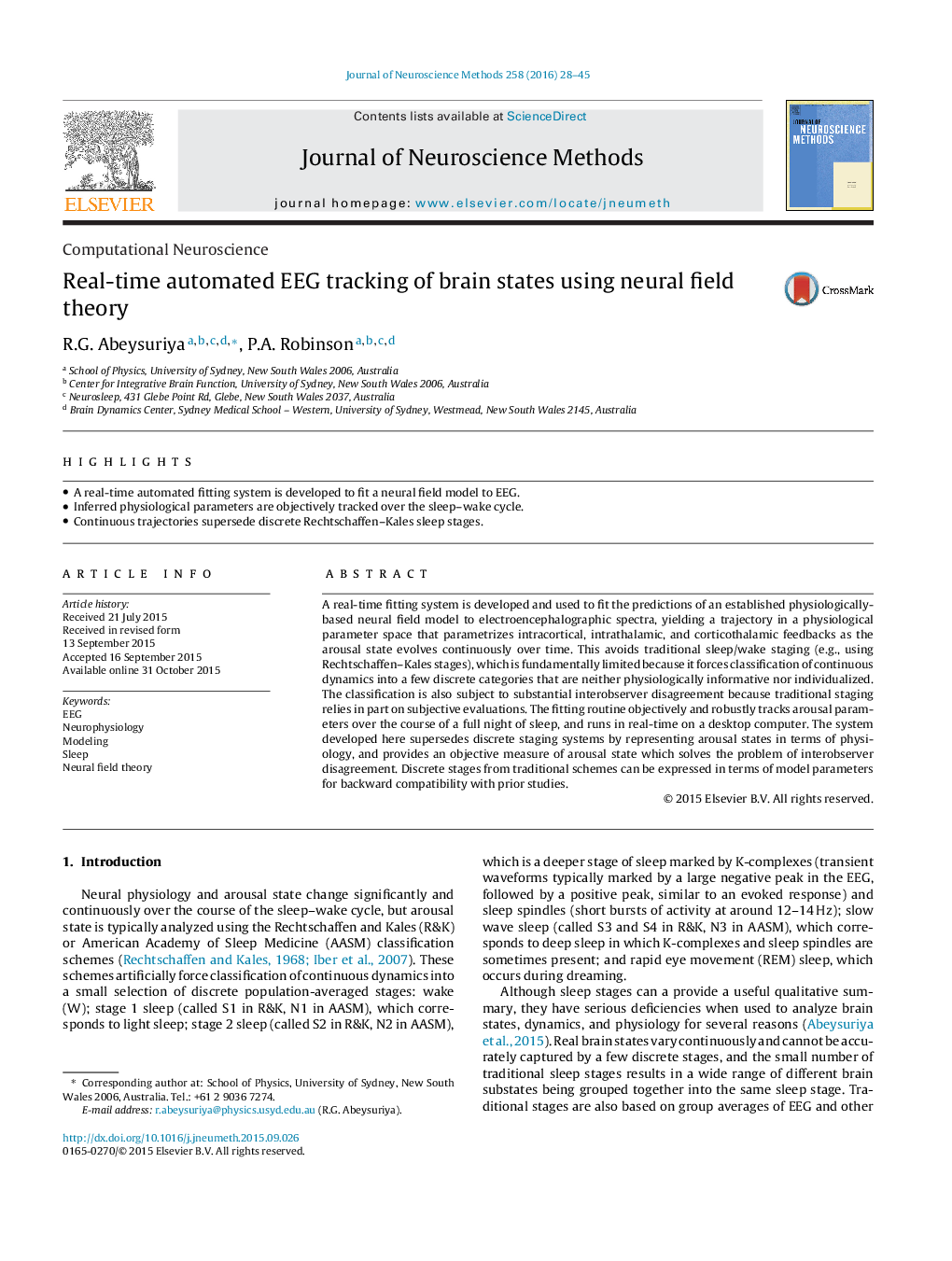| کد مقاله | کد نشریه | سال انتشار | مقاله انگلیسی | نسخه تمام متن |
|---|---|---|---|---|
| 6267853 | 1614611 | 2016 | 18 صفحه PDF | دانلود رایگان |

- A real-time automated fitting system is developed to fit a neural field model to EEG.
- Inferred physiological parameters are objectively tracked over the sleep-wake cycle.
- Continuous trajectories supersede discrete Rechtschaffen-Kales sleep stages.
A real-time fitting system is developed and used to fit the predictions of an established physiologically-based neural field model to electroencephalographic spectra, yielding a trajectory in a physiological parameter space that parametrizes intracortical, intrathalamic, and corticothalamic feedbacks as the arousal state evolves continuously over time. This avoids traditional sleep/wake staging (e.g., using Rechtschaffen-Kales stages), which is fundamentally limited because it forces classification of continuous dynamics into a few discrete categories that are neither physiologically informative nor individualized. The classification is also subject to substantial interobserver disagreement because traditional staging relies in part on subjective evaluations. The fitting routine objectively and robustly tracks arousal parameters over the course of a full night of sleep, and runs in real-time on a desktop computer. The system developed here supersedes discrete staging systems by representing arousal states in terms of physiology, and provides an objective measure of arousal state which solves the problem of interobserver disagreement. Discrete stages from traditional schemes can be expressed in terms of model parameters for backward compatibility with prior studies.
Journal: Journal of Neuroscience Methods - Volume 258, 30 January 2016, Pages 28-45